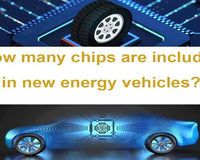
Which ICs can be used for burning?
MCU Programmable IC.
MCU programmable IC, there are many single-chip controllers (SINGLE MCU) on the market that can be programmed once or multiple times through the matching programmer. Usually, MCUs that can only be programmed once are called OTP MCUs, and the opposite is MTP MCU, which is an MCU that can be programmed multiple times.
Storage Programmable IC.
There are many categories of storage programmable ICs, such as EPROM, EEPROM, NOR FLASH, SPROM, NAND FLASH, etc., all of which belong to storage programmable ICs.
EPROM, NOR FLASH, EEPROM, SPROM are mainly used to store our data or programs. There are many manufacturers, and there are quite a few universal programmers on the market that can program data into these ICs. The following are some common programmers:
UP-848P programmer support eMMC, NAND, SPINAND, SPINOR and other mainstream IC programming. Support various devices to customize special programming algorithms to meet customers’ various algorithm programming requirements.

XP866 EPROM burne programming support for 25 FLASH, for 24 EEPROM, for 25 EEPROM, for 93 EEPROM and other series of memory chips. Fast reading and writing speed, only 3 seconds to read EN25T80 and 9 seconds to write EN25T80, is currently the fastest BIOS chip programmer on the market.

RT809F ISP Programmer RT809F VGA ISP AVR GAL PIC LCD Programmer is a universal USB Avr VGA Isp Programmer. Supports 24/25/93 series ICs.

SP20B programmers SPI FLASH special high speed mass production programmers fully support the development of domestic and foreign manufacturers SPI NOR FLASH EEPROM, I2C/MicroWireetc. EEPROM High speed mass production programmer with type-c interface and supports multi-machine burning, etc.

Why does IC need to be burned?
Initialization of Microcontrollers: To enable a microcontroller like an ARM or an MCU to work as per design, it must be programmed with the required firmware, ensuring its desired functionality.
Encryption and Parameter Setting: Burn-in also allows for secure parameter settings and encryption, such as WiFi credentials, to maintain confidentiality.
Loading Additional Files: Multimedia like fonts, pictures, and sounds are commonly loaded onto chips to enhance user experiences.
The process of chip burn-in is pivotal in ensuring the correct functioning and security of electronic components. By using appropriate burn-in devices based on product development and production needs, manufacturers can streamline assembly routines and guarantee product quality. Visual inspection and specialized tools play essential roles in verifying if a chip has been successfully programmed and populated with the required data and instructions.










